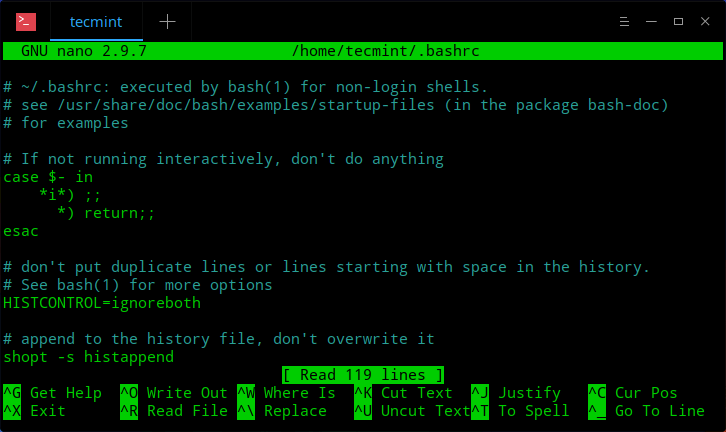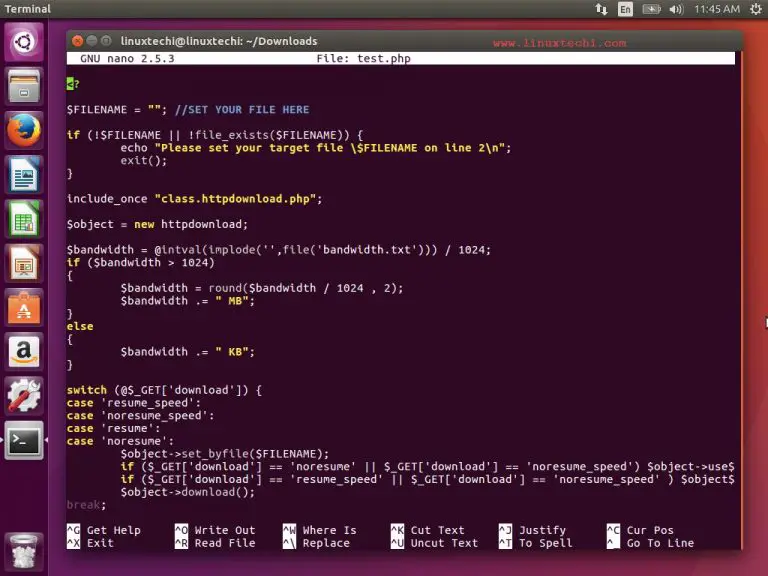
Common commands include save, cut, paste, search, and exit. Once the file is open, you can use the arrow keys to move the cursor and the command keys to perform actions. To use nano commands, first open the file you want to edit in nano. It is a simple and easy to use editor that has basic commands that are used to navigate through and edit files. Nano is a text editor that is used in command line environments. By using these simple commands, Linux users can quickly and easily navigate the nano editor. Commands written as *G, for example, use the letter G, whereas commands written as *M-R use the letter R. It is critical to note that the keyboard commands are written in lowercase letters, and the ctrl and alt keys may be required. When users finish the screen, they’ll be presented with a list of keyboard commands that can be used to navigate the editor. To use nano on Linux, simply type Bash into the command prompt. UW Pico Text Editor improves on the UW Pico text editor by providing users with more user-friendly and WYSIWYG (What You See Is What You Get) experiences while eliminating the need for any modes that other command-line editors may require. It is a simple, powerful text editor that can be run in the Bash command line. The Nano app is ideal for beginners due to its ease of use and user-friendly interface, whereas Vim is suitable for experienced users who want more advanced features. The editor should be chosen based on the user’s preferences as well as the requirements he or she possesses. This feature is not present in Vim, on the other hand. By typingnano -w /file directory/filename, you can accomplish this. In addition to the two editors’ key differences, Nano allows users to disable line wrap in order to avoid formatting issues. The Pico text editor was released in the late 1980s and was improved in version 1. Furthermore, Nano is a command-line editor, whereas Vim is not. The other editor, Vim, is a mode-based editor, and changes to text must be entered in a specific mode. This modeless editor allows you to add text to a file after it has been opened. Although they have some similarities, their approaches and abilities differ. Many developers worldwide use the Vim and Nano text editors. When running spell check, the command: can be used.
#Nano text editor install
The first step is to install spellchecker. It is possible to add the contents of another file to an Nano edit. By using Nano editor, you can find and replace the text in your file with its correct spelling. This tutorial will cover everything you need to know in order to get started with nano. You do not need to enter any mode in Vim to begin editing. When compared to other text editors like vim and emacs, this program is simple to learn. Nano is a text editor that is simple to use. Any command-line text editor should have functionality like searching and replacing, undo and redo, scrolling, and highlighting syntax.


#Nano text editor free
It is a user-friendly, free, and open-source text editor that is free and available. In most modern Linux systems, the nano text editor is typically pre-installed. The basic features included in the program include syntax highlighting, multiple buffers, search and replace, regular expression support, spellcheckers, and, of course, UTF-8 encoding. If the spell checker is available, CTRL TInvokes it.įor Unix and Linux, use the command line text editor provided by the Linux kernel. You can replace a string or a regular expression by using CTRL *. If you make any changes to a file, the save request will be sent to you. To exit the Nano text editor, press CTRL X. By the end of this article, you should feel confident enough to use Nano for your everyday text editing needs.Ī Nano Text Editor CommandsCommandExplanationCTRLR opens a file that has been placed at the cursor position and inserts it into the command.
#Nano text editor how to
We’ll cover how to open and save files, move around within a file, as well as some basic editing commands. In this article, we’ll walk through how to use Nano in Linux so that you can quickly and easily make edits to text files. It is a great tool for those who are new to Linux or who don’t have a lot of experience working with the command line. Nano is a powerful, lightweight, and user-friendly text editor that is included in most Linux distributions. If you’re a Linux user looking to become more comfortable with command-line text editing, you’ve likely heard of the popular text editor, Nano.


 0 kommentar(er)
0 kommentar(er)
